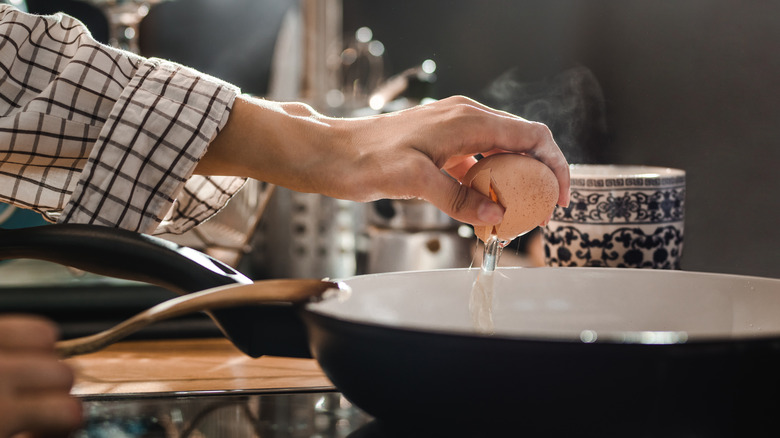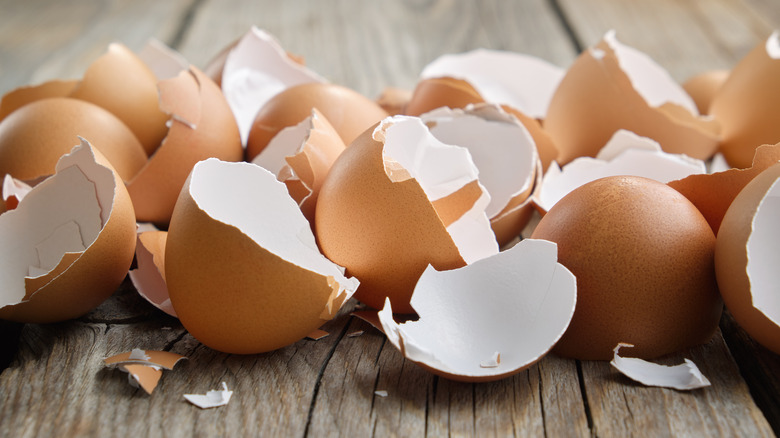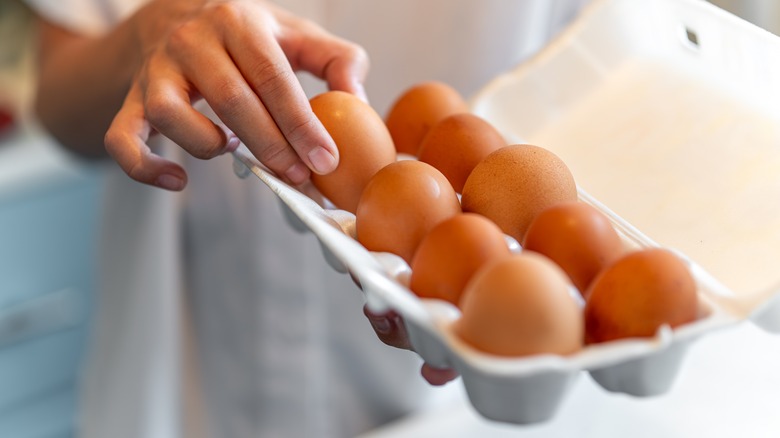The Easiest Way To Crack An Egg With One Hand
No cooking skill might be as elusive as cracking an egg with one hand. Despite most people associating this talent with professional chefs, a few home cooks have mastered the method without ever attending culinary school. And while it might just seem like a cool trick at first glance, having the ability to rapidly crack eggs and multitask with your other hand has undeniable value. Besides, pulling off a one-handed crack is actually not as difficult as it seems, if you know where to place your thumb.
To begin cracking in one hand, start by tapping the egg on a hard, flat surface, such as the middle of your cutting board. This will create a split that your hand can then pry apart — simply flick your thumb upward to separate the shell into two and release the egg. Your index and middle fingers should naturally move upward during this motion, while your ring and pinkie fingers can hold the second half of the shell back.
@cibsandibus Reply to @williamcraft09 How to crack an egg with one hand. #TikTokTaughtMe #TikTokPartner #howto #kitchenhack #foodies #egg
Due to gravity, the inside of the egg will naturally drop down once you do this, so make sure you're performing this trick over a bowl or skillet to avoid making a mess on your countertops. If you're opting for the latter, just remember to use a heated pan, as you should never crack eggs into a cold pan, since this makes them stick to the surface.
Crack your egg on a flat surface
Since you need a sturdy surface to start cracking eggs with one hand, you might think to tap on the rim of something nearby. But did you know that it's a mistake to crack eggs on the edge of your counter or pan? Doing so makes it more likely that the yolk will be pierced by the sharp side of your cookware or countertop, making it less than ideal for unscrambled eggs. Cracking on an edge also increases the chance that the shell will fracture into tiny bits that are a nightmare to remove if they get lodged within the egg whites and yolk. Plus, this method might leave raw residue all over your cooking surfaces. Even if you don't get drops of egg white or yolk on your counter, salmonella can exist in shells.
These are just some of the reasons why many professional cooks prefer cracking eggs with one hand on a flat surface. Since eggs are structurally weakest in their middle (and not their ends), hitting this part makes it more likely that you'll have a clean split along your shell. You don't need a lot of force, either, as one firm tap should be all you need to break the shell. To avoid getting any egg residue on your counters, tap your eggs inside a bowl or washable cutting board.
Practice cracking eggs with a coin and two balls
It may be hard to nail the one-hand egg crack on your first try. If you're not too fond of relearning a basic cooking skill — and potentially wasting food in the process — you can use some small balls and spare change to practice egg cracking with one hand before you work your way up to real food.
On your palm, place two ping pong or golf balls alongside each other. Between them, wedge a coin so that the two balls are now holding the coin in place. From there, begin to practice the motion of cracking open an egg with one hand using the props (in this scenario, the two balls act like the eggshells while the coin represents the white and yolks). Once you're able to separate the balls and release the coin — without dropping any of the "shells" — you can begin to crack real eggs with one hand.
Since you can still run the risk of shattering the eggshells the first few times attempting the trick, it's wise to do so over a large bowl or strainer in the beginning. These containers will catch any stray bits that you can easily fish out without having to worry about touching a hot skillet.



